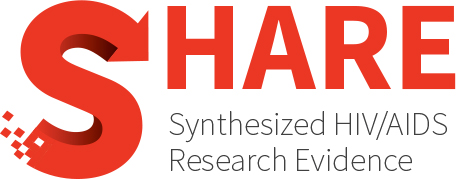Category Archives: Governance arrangements
How decisions about care are made
Hiding in plain sight: Highlighting the research gap on access to HIV and other sexual health services for underrepresented gay men in developed Western countries—Insights from a scoping review with a focus on Arab men
BACKGROUND: Strategies pertaining to HIV and sexual health for gay, bisexual, and other men who have sex with men (GBMSM) have shifted focus towards underrepresented subgroups within some developed Western...
Country ownership and sustainable programming of the HIV response in South Africa: A scoping review
BACKGROUND: Concerns have arisen regarding the extent to which South Africa’s HIV response can be country-owned and sustainable given substantial foreign investment and technical support. OBJECTIVES: To assess the extent...
Exploring implementation considerations for geriatric-HIV clinics: A secondary analysis from a scoping review on HIV models of geriatric care
OBJECTIVES: This review aimed to map the current state of knowledge regarding the implementation considerations of existing geriatric-HIV models of care, to identify areas of further research and to inform...
HIV pre-exposure prophylaxis, blood donor deferral, occult infection, and risk of HIV transmission by transfusion: A fine balance between evidence-based donor selection criteria and transfusion safety
Pre- and postexposure prophylaxis for human immunodeficiency virus (HIV) are key to reducing the transmission of this virus. Furthermore, low-toxicity, long-acting formulations provide additional clinical benefits, in particular easier adherence...
A systematic review of interventions for young men who have sex with men and young transgender women living with HIV
Young men who have sex with men (YMSM) and young transgender women (YTGW) have unique challenges to HIV care. We conducted a systematic review to summarize behavioral and structural interventions...
Provision of HIV prevention and care services to farmworkers in sub-Saharan African countries
OBJECTIVES: To summarise data on human immunodeficiency virus (HIV) services available to farmworkers in sub-Saharan Africa (SSA). METHODS: We conducted a systematic review to understand which HIV prevention and care...
Undetectable=Untransmittable=Universal Access (U=U=U): Transforming a foundational, community-led HIV/AIDS health informational advocacy campaign into a global HIV/AIDS health equity strategy and policy priority
BACKGROUND: Undetectable=Untransmittable (U=U) first emerged in 2016 as a health information campaign to promote rigorous scientific evidence that people living with HIV (PLHIV) on effective treatment who have reached an...
Progress towards triple elimination of mother-to-child transmission of HIV, hepatitis B and syphilis in Pacific Island Countries and Territories: A systematic review
The diverse geographic, demographic, and societal factors in the Pacific Island Countries and Territories (PICTs) have contributed to unique epidemiological patterns of HIV, syphilis, and hepatitis B. Transmission can be...
Female empowerment to improve sexual and reproductive health outcomes and prevent violence in adolescent girls and young women in Uganda: Evidence reviews for policy
BACKGROUND: Adolescent girls and young women in Uganda face numerous public health challenges including high HIV prevalence, teenage pregnancies, poor sexual and reproductive health rights, child marriage, and violence. OBJECTIVES:...
Behavioral and social interventions to promote optimal HIV prevention and care continua outcomes in the United States
PURPOSE OF REVIEW: This review reports on trends in behavioral and social intervention research in the United States published over the past year (2020-2021) investigating HIV prevention and care outcomes,...
Assessment of online self-testing and self-sampling service providers for sexually transmitted infections against national standards in the UK in 2020
OBJECTIVES: Online testing for STIs may help overcome barriers of traditional face-to-face testing, such as stigma and inconvenience. However, regulation of these online tests is lacking, and the quality of...
Health care providers’ views on clinic infrastructure and practice models that may facilitate HIV preexposure prophylaxis (PrEP) prescribing: A qualitative meta-synthesis
HIV (human immunodeficiency virus) preexposure prophylaxis (PrEP) is an effective biomedical HIV prevention tool. Increasing PrEP use among populations disproportionately affected by HIV is one of the key efforts in...
